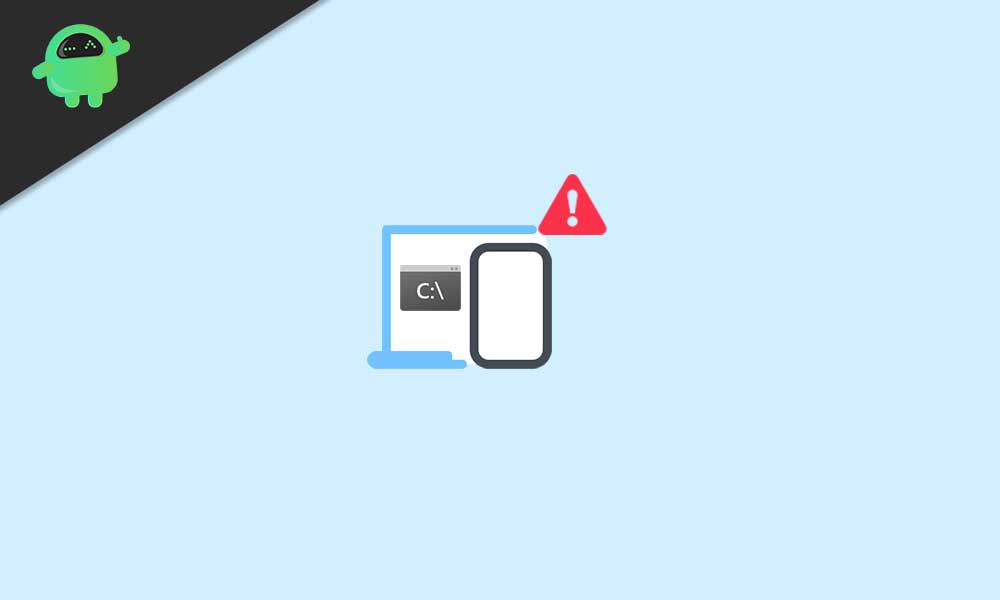If you’re an Android user and prefer to have root access or an unlocked bootloader then you should know about ADB and Fastboot. This is the most useful method to flash image files or unlocking the bootloader on Android devices with a minimum amount of effort. Whereas advanced users can boot their device into Fastboot or Recovery mode very easily. Here we’ve shared steps on How to Fix FAILED (remote: Check device console).
Despite having so many benefits and usability, plenty of users may also find multiple issues or errors while using ADB and Fastboot. Although there are plenty of common errors that can be found, check device console errors becomes one of the trending topics these days among the Android community. Once users find this issue, the command prompt or the PowerShell window becomes unable to detect your connected device.
Therefore, even after attaching your handset properly, you may get the specific FAILED error notice while executing or flashing anything. Now, without wasting any more time, let’s jump into it.
Also Read

What is Failed Remote: Check Device Console Error
To be very precise, it’s one kind of storage partition error that doesn’t let the command prompt or Windows PowerShell recognize your device easily. In that scenario, the command won’t be executed successfully. Therefore, nothing can be successful by using the ADB and Fastboot method for sure.
Also Read
Steps to Fix FAILED (remote: Check device console)
Although there is a specific method to fix this error, here we’ve shared two possible methods to fix such an issue.
Disclaimer: GetDroidTips won’t be responsible for any kind of damage or error that may occur to your device or its data by following this guide. So, do it at your own risk.
Also Read: Fix: Fastboot FAILED (remote: Command not allowed) Error
Step 1: Download the Latest ADB and Fastboot Tool
So, if you’re now in a position to unbrick your device then you may have heard about the Rescue.zip file. Isn’t it? The Rescue.zip file includes a couple of files such as xFSTK Downloader, Drivers, xFSTK Config, etc.
- Right-click on the ADB and Fastboot tool on your PC.
- Select Open File Location > Press and hold the Shift key + Right-click on the mouse to get additional options.
- Here click on Open command window here > Once the command prompt window opens, make sure to do the following tasks.
- Now, type the following command line and hit Enter to execute it: [Here boot.img is the name of the image file. If you’ve renamed the name, replace the boot.img]
fastboot flash boot boot.img
- This may take a couple of seconds and you’ll receive the FAILED (remote: flash_cmds error!)
Step 2: Install Rescue Zip and Follow This
- We’ve assumed that you’ve already downloaded the Rescue.zip file on your PC.
- Just extract the zip file to another folder and copy it to the ADB and Fastboot folder.
- Open the extracted folder that you’ve just copied.
- Drag and drop the partition.tbl file into the ADB and Fastboot folder.
- Now, open the Partition Commands.txt file > Go to the New Backup folder.
- Make sure to use the IFWI.zip file that contains firmware based on the Android 5.0 Lollipop version.
- Just download IFWI.zip from this link and extract it.
- Open the extracted IFWI folder > Next, copy your device model’s IFWI Bin Files from the list and paste them into the ADB and Fastboot folder.
- Now, go to the partition commands.txt file > Copy all the mentioned command lines together.
- Paste those commands inside the command prompt window and hit Enter to execute them.
- Wait for the process to complete because it may take some time. Please be patient.
- Once the process is successfully finished, you’ll be able to see it on the command prompt window.
- Now, try checking whether the ADB and Fastboot tool are capable to write IMG files or not.
- So, type the following command line and hit Enter to check it:
fastboot flash boot boot.img
- Wait for it to finish and voila! You should not receive the particular error message anymore.
- You have to flash the system (.img) file on your device and unlock the bootloader. [Android Lollipop Bootloader Unlocker]
- So, open the Hard Un Break Methods.txt file > Copy all the command lines and paste them into the command prompt window.
- Again wait for some time to complete the writing process.
- Now, the final step is to unlock the bootloader. Open the Android Lollipop version firmware folder.
- Double-click on Unlock_one_click_v2.bat file to start unlocking the bootloader.
- Once done, the command prompt window will ask you to ‘press any key to continue.
- So, press any key to restart your device in the system.
Platform Tools Commands:-
Asus ZE550ML
fastboot oem erase_osip_header fastboot oem erase_token fastboot oem start_partitioning fastboot flash /tmp/partition.tbl partition.tbl fastboot oem partition /tmp/partition.tbl fastboot erase system fastboot erase cache fastboot erase data fastboot erase APD fastboot erase ADF fastboot oem wipe splashscreen fastboot oem stop_partitioning fastboot flash splashscreen splashscreen.img fastboot flash token bom-token_ann_a0-mofd_v1-ze550ml.bin fastboot flash dnx dnx_fwr_ann_a0-mofd_v1-ze550ml.bin fastboot flash ifwi ifwi_ann_a0-mofd_v1-ze550ml.bin fastboot flash fastboot droidboot.img fastboot flash recovery recovery.img
Asus ZE551ML
fastboot oem erase_osip_header fastboot oem erase_token fastboot oem start_partitioning fastboot flash /tmp/partition.tbl partition.tbl fastboot oem partition /tmp/partition.tbl fastboot erase system fastboot erase cache fastboot erase data fastboot erase APD fastboot erase ADF fastboot oem wipe splashscreen fastboot oem stop_partitioning fastboot flash splashscreen splashscreen.img fastboot flash token bom-token_ann_a0-mofd_v1-ze551ml.bin fastboot flash dnx dnx_fwr_ann_a0-mofd_v1-ze551ml.bin fastboot flash ifwi ifwi_ann_a0-mofd_v1-ze551ml.bin fastboot flash fastboot droidboot.img fastboot flash recovery recovery.img
Flashing IMG Files Commands:
fastboot flash splashscreen splashscreen.img fastboot flash fastboot droidboot.img fastboot flash boot boot.img fastboot flash recovery recovery.img fastboot flash system system.img
That’s it, guys. We hope you’ve found this guide useful. Feel free to ask in the comment below.
Credit: Tech YouTubers
Also Read